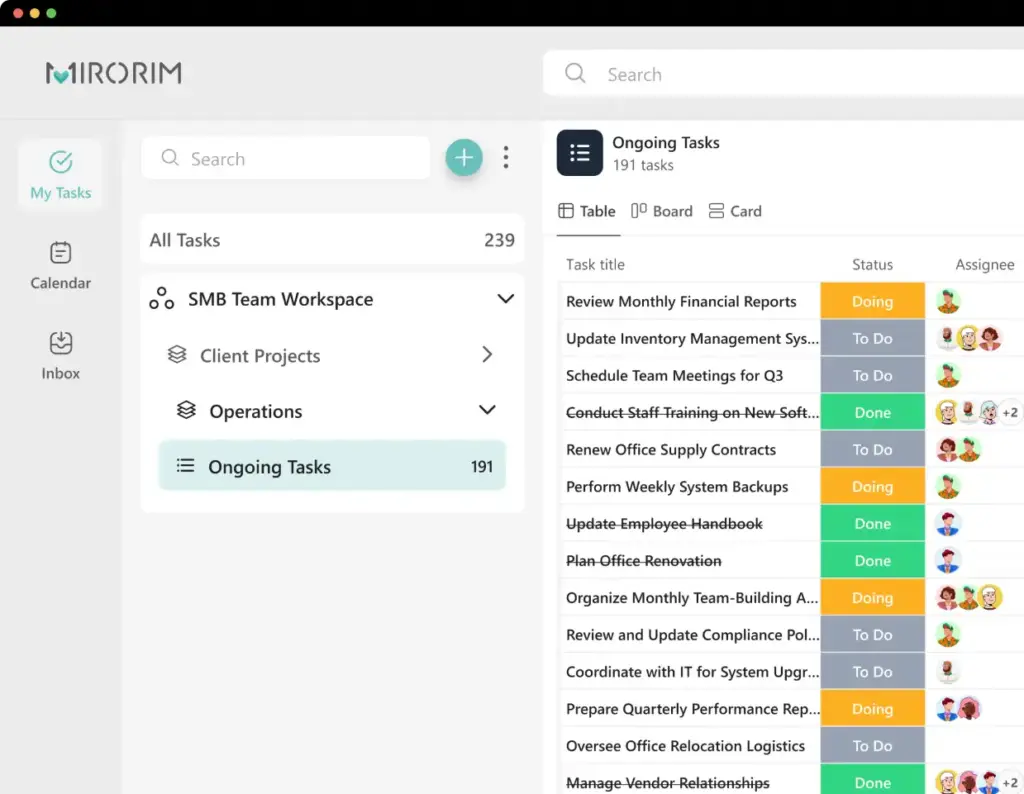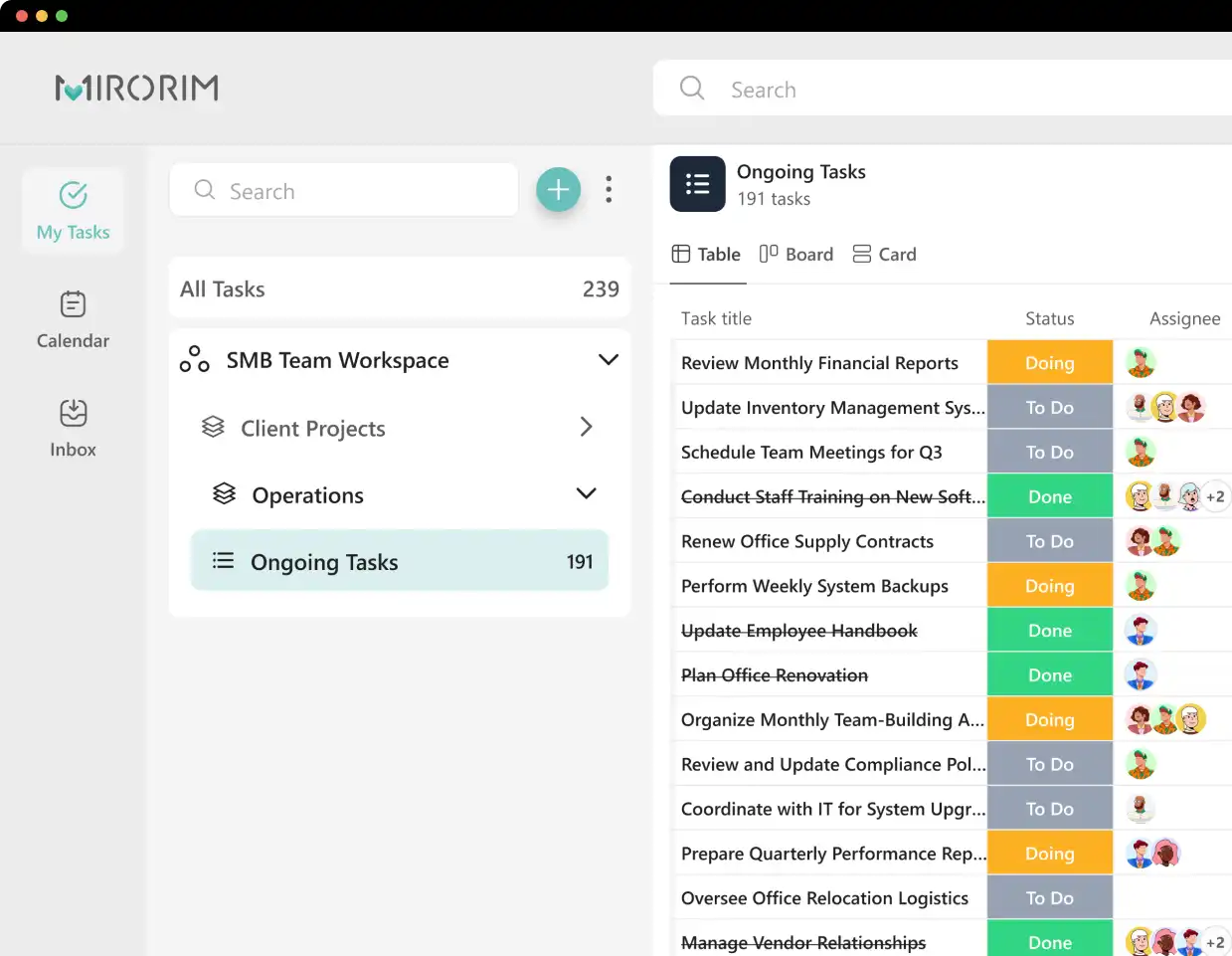
Empowering SMBs: A Guide to Essential Collaboration Tools
In today’s fast-paced business environment, effective collaboration is no longer a luxury but a necessity, especially for Small and Medium-sized Businesses (SMBs). The right collaboration tools for SMBs can streamline communication, boost productivity, and foster a stronger sense of teamwork, regardless of location. This article delves into the critical role of collaboration tools for SMBs, exploring various options and providing insights into selecting the best fit for your specific needs.
The Importance of Collaboration Tools for SMBs
SMBs often operate with limited resources, making efficiency paramount. Collaboration tools help to:
- Improve Communication: Facilitate seamless information sharing between team members.
- Enhance Productivity: Streamline workflows and reduce time wasted on administrative tasks.
- Foster Teamwork: Create a more connected and collaborative work environment.
- Reduce Costs: Minimize travel expenses and optimize resource utilization.
- Enable Remote Work: Support distributed teams and flexible work arrangements.
By leveraging the power of collaboration tools, SMBs can level the playing field and compete more effectively in the global marketplace. The right software can transform how teams work, leading to increased innovation and better customer service.
Types of Collaboration Tools for SMBs
The market offers a wide array of collaboration tools, each with its unique features and functionalities. Understanding the different types is crucial for making an informed decision.
Communication and Messaging Platforms
These platforms provide real-time communication channels for instant messaging, voice calls, and video conferencing. Popular options include:
- Slack: A widely used platform for team communication, offering channels, direct messaging, and integrations with other tools.
- Microsoft Teams: Integrated with the Microsoft 365 suite, Teams provides chat, video conferencing, and file sharing capabilities.
- Google Workspace (formerly G Suite): Includes Google Chat and Google Meet, offering seamless communication within the Google ecosystem.
Choosing the right platform depends on your team’s size, communication style, and integration needs. Consider factors such as ease of use, security features, and pricing when making your selection. These collaboration tools for SMBs can significantly enhance internal communication.
Project Management Software
Project management tools help teams organize tasks, track progress, and manage deadlines. Some popular choices include:
- Asana: A flexible project management tool that allows teams to create tasks, assign responsibilities, and track progress.
- Trello: A visual project management tool based on Kanban boards, making it easy to track tasks and workflows.
- Monday.com: A customizable platform that offers a wide range of features, including project tracking, workflow automation, and reporting.
Project management software can improve team collaboration by providing a central hub for all project-related information. This ensures that everyone is on the same page and that tasks are completed efficiently. Consider the complexity of your projects and the level of detail required when selecting a project management tool. Effective project management is a cornerstone of successful collaboration tools for SMBs.
File Sharing and Storage Solutions
Securely storing and sharing files is essential for collaboration. Cloud-based solutions offer convenient access and enhanced security. Popular options include:
- Google Drive: Integrated with Google Workspace, Drive provides ample storage space and seamless file sharing.
- Dropbox: A well-established file sharing platform that offers secure storage and collaboration features.
- Microsoft OneDrive: Integrated with Microsoft 365, OneDrive allows users to store and share files easily.
When choosing a file sharing solution, consider factors such as storage capacity, security features, and integration with other tools. Ensuring that your files are securely stored and easily accessible is crucial for efficient collaboration. These collaboration tools for SMBs ensure data is readily available to those who need it.
Video Conferencing Platforms
Video conferencing has become an indispensable tool for remote teams. Platforms like Zoom, Google Meet, and Microsoft Teams offer high-quality video and audio conferencing capabilities.
- Zoom: A popular video conferencing platform known for its ease of use and robust features.
- Google Meet: Integrated with Google Workspace, Meet offers seamless video conferencing for teams.
- Microsoft Teams: As mentioned earlier, Teams also provides excellent video conferencing capabilities.
When selecting a video conferencing platform, consider factors such as meeting capacity, video quality, and integration with other tools. High-quality video conferencing can help bridge the gap between remote teams and foster a stronger sense of connection. These collaboration tools for SMBs are vital for remote communication.
Document Collaboration Tools
Real-time document collaboration allows multiple users to work on the same document simultaneously, improving efficiency and reducing errors. Popular options include:
- Google Docs: A web-based word processor that allows for real-time collaboration.
- Microsoft Word Online: The online version of Microsoft Word, offering similar collaboration features.
- Zoho Writer: A free online word processor with collaboration capabilities.
Document collaboration tools streamline the document creation process and ensure that everyone is working with the most up-to-date version. This can significantly reduce the time spent on revisions and improve overall productivity. Real-time collaboration is a game-changer among collaboration tools for SMBs.
Choosing the Right Collaboration Tools for Your SMB
Selecting the right collaboration tools for SMBs requires careful consideration of your specific needs and requirements. Here are some factors to consider:
- Team Size: The number of users who will be using the tools.
- Budget: The amount of money you are willing to spend on collaboration tools.
- Technical Expertise: The level of technical skills within your team.
- Integration Needs: The ability to integrate with other tools and systems.
- Security Requirements: The level of security required to protect sensitive data.
Start by identifying your team’s pain points and areas where collaboration can be improved. Then, research different tools and compare their features and pricing. Consider offering a trial period to test out different options before making a final decision. [See also: Project Management Software for Small Businesses]
Implementation and Training
Once you have selected your collaboration tools, it’s important to implement them effectively and provide adequate training to your team. Here are some tips for successful implementation:
- Develop a Clear Implementation Plan: Outline the steps involved in implementing the tools and assign responsibilities.
- Provide Training to Your Team: Ensure that everyone knows how to use the tools effectively.
- Encourage Adoption: Promote the use of the tools and encourage team members to use them regularly.
- Monitor Usage and Gather Feedback: Track how the tools are being used and gather feedback from your team to identify areas for improvement.
Proper implementation and training are crucial for maximizing the benefits of collaboration tools. Without adequate support, your team may struggle to adopt the new tools, leading to frustration and decreased productivity.
The Future of Collaboration Tools for SMBs
The landscape of collaboration tools is constantly evolving, with new technologies and features emerging all the time. Some of the key trends shaping the future of collaboration include:
- Artificial Intelligence (AI): AI-powered tools can automate tasks, provide insights, and improve decision-making.
- Virtual Reality (VR) and Augmented Reality (AR): VR and AR technologies can create immersive collaboration experiences, allowing remote teams to work together as if they were in the same room.
- Low-Code/No-Code Platforms: These platforms allow users to create custom collaboration solutions without requiring extensive coding knowledge.
As these technologies continue to develop, collaboration tools for SMBs will become even more powerful and versatile, enabling teams to work together more effectively than ever before. Staying informed about these trends and adopting new technologies can give your SMB a competitive edge. [See also: Best Practices for Remote Team Management]
Conclusion
Collaboration tools for SMBs are essential for success in today’s competitive business environment. By choosing the right tools and implementing them effectively, SMBs can improve communication, enhance productivity, foster teamwork, and reduce costs. Take the time to assess your specific needs and explore the various options available to find the best fit for your organization. Investing in collaboration tools is an investment in your company’s future. Embrace these collaboration tools to unlock new levels of efficiency and innovation. These collaboration tools are a vital component of a modern SMB. Don’t underestimate the power of effective collaboration tools. Selecting the right collaboration tools for SMBs can be transformative. Remember to consider your unique requirements when choosing collaboration tools for SMBs. The right collaboration tools can make all the difference. Choosing the appropriate collaboration tools can significantly boost your business. Optimize your workflow with the best collaboration tools. Discover the benefits of using collaboration tools for SMBs. The implementation of collaboration tools is a strategic move. Invest wisely in collaboration tools to see significant returns.

